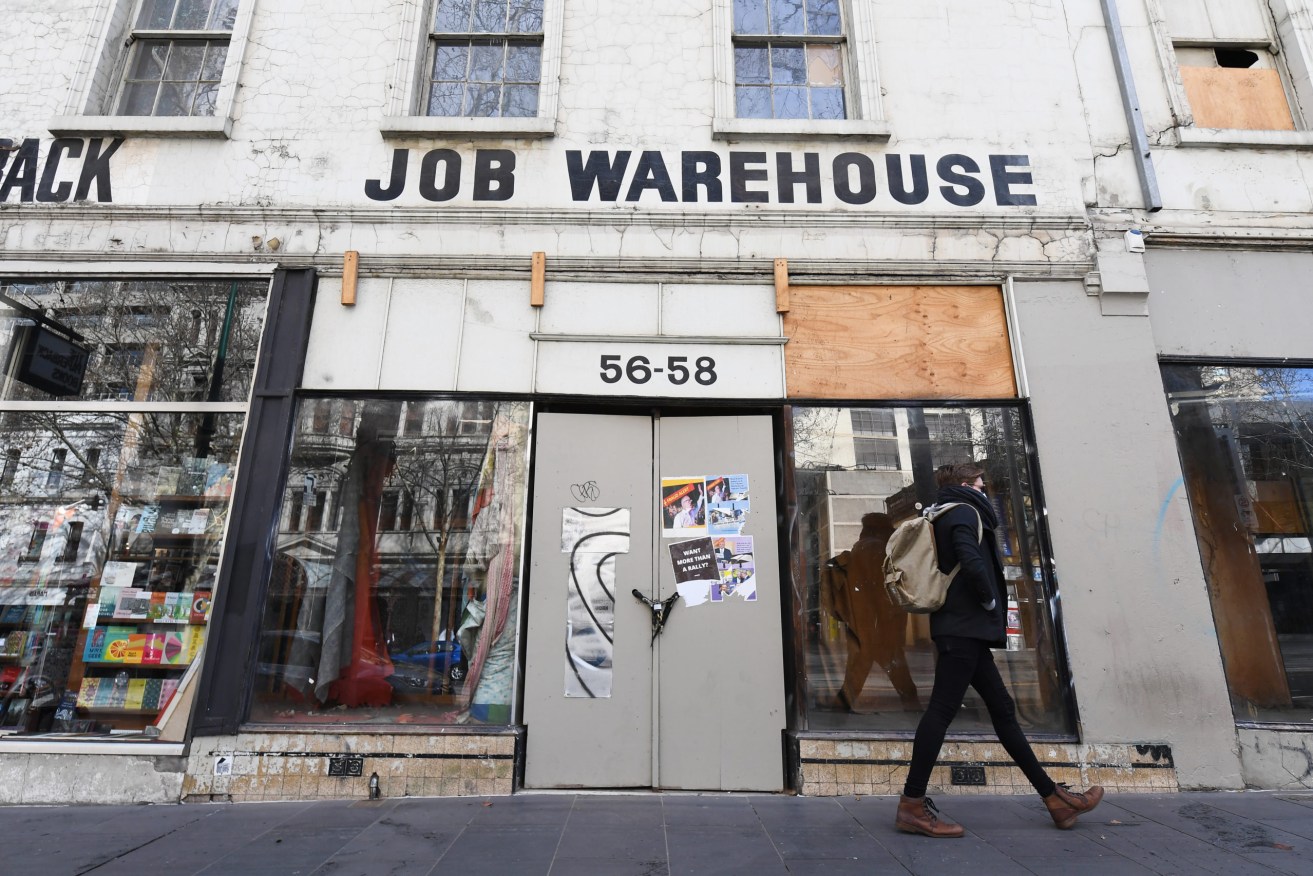Australia officially in recession after biggest GDP fall since 1959
The Australian economy contracted by 7.0 per cent in the June quarter, confirming the nation is in its first recession since the early 1990s following the biggest quarterly GDP fall in 61 years – but SA bucked the national trend with a lower rate.

Photo: AAP/James Ross
Australian Bureau of Statistics head of national accounts Michael Smedes said the global pandemic and associated containment policies led to the fall.
“This is, by a wide margin, the largest fall in quarterly GDP since records began in 1959,” he said on Wednesday.
Economists expected the national accounts for the June quarter to show an economic contraction of around six per cent.
In the year to June, the economy shrank 6.3 per cent, the ABS said.
In the March quarter, the economy had contracted by 0.3 per cent.
A technical recession is defined by two consecutive quarters of negative growth.
South Australia recorded a 5.8 per cent fall for the quarter, with household final consumption spending down 9.9 per cent, driven by a 86.7 per cent fall in transport services reflecting travel restrictions and working from home, while spending in hotels, cafes and restaurants fell by 48.1 per cent.
The state recorded a 15 per cent fall in ownership transfer costs due to restrictions on auctions and open houses, and a 2.4 per cent fall in non-dwelling construction.
But Government final consumption expenditure increased by 0.9 per cent, reflecting an increase in state and government spending due to COVID-19 impacts, and public gross fixed capital increased by 3.0 per cent.
Nationally, private demand detracted 7.9 percentage points from economic growth in the quarter, driven by a 12.1 per cent fall in household expenditure which included a 17.6 per cent drop in services expenditure.
“The June quarter saw a significant contraction in household spending on services as households altered their behaviour and restrictions were put in place to contain the spread of the coronavirus,” Smedes said.
On the positive side, net exports (exports minus imports) contributed a large one percentage point to the result, while public demand added 0.6 percentage points, driven by health-related spending by state and local governments.
The economic downturn has already seen the number of people unemployed push past more than one million for the first time.
Treasury has warned a further 400,000 Australians could join the dole queue before Christmas, partly as a result of Victoria’s harsh lockdown.
Property Council SA director Daniel Gannon said the numbers were “sobering” and it was “more important than ever that South Australia builds its way out of this recession and identifies strategic job-creating opportunities as an urgent priority”.
“Given social infrastructure creates three times as many jobs as road and rail, it’s time to embrace this agenda and get down to work,” he said.
“We need to embrace a low interest rate environment and leverage South Australia’s enviable and positive COVID outcomes to supercharge investment in social infrastructure. Hospitals, schools, tourism, arts, cultural and entertainment facilities, precinct and productive infrastructure should top this list of construction works.
“We need to put cranes all over the state and get used to seeing hard hats, steel caps and high-vis vests across metropolitan Adelaide.”
-with AAP




